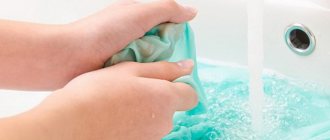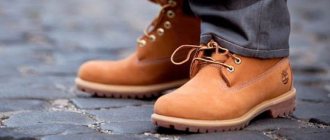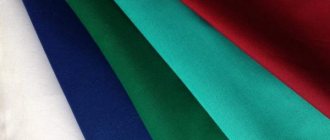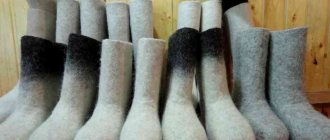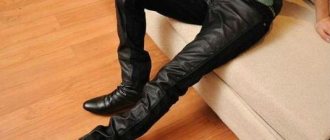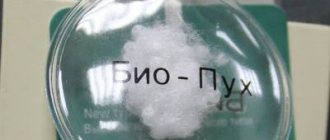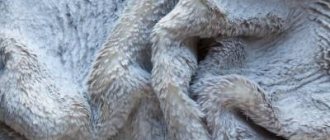Astronauts and polar explorers knew about the excellent qualities of the unique insulation Thinsulate about forty years ago. Gradually, the scope of application of insulation expanded, athletes and travelers began to use it intensively, and later it came to the common consumer. It was even used for children's winter clothing.
This name comes from the English language - thin (“thin”) and insulation (“insulation”). It is really very thin, consists of the finest artificial fibers, much thinner than human hair, and is very similar to natural fluff.
Thinsulate material
The structure of its fibers allows it to occupy a minimum volume, but at the same time retain heat perfectly. Tracksuits, children's overalls, all kinds of winter jackets, sleeping bags, blankets - the range of products with Thinsulate filler is huge. Of course, sooner or later you will have to wash your jacket, down jacket or overalls.
The housewife will be faced with the question: is it possible to wash Thinsulate in a machine or only by hand, how to wash a jacket with Thinsulate so that it does not deteriorate. Let's figure out in detail how to do everything correctly.
Features and Benefits
The structure of artificial Thinsulate fibers makes it thin, light, and has many remarkable properties, for example:
- does not cause allergic reactions, unlike natural fluff;
- an item with Thinsulate can be used at temperatures down to -25 degrees;
- easy care, no shrinkage, even after numerous washes, the shape and attractive appearance are retained;
- ensures proper air exchange, moisture from the atmosphere does not penetrate inside, and excess moisture and sweat calmly exit. As a result, the so-called “greenhouse effect” does not occur;
- the ability to keep moisture out of the atmosphere allows you to wear such a thing in rainy weather;
- The material dries quickly, does not shrink or wrinkle.
Thinsulate material
This unique material has only two drawbacks:
- it does not tolerate high temperatures - more than 40 degrees;
- its cost is much more expensive than, for example, padding polyester and other fillers.
Advantages and disadvantages of Thinsulate
Advantages:
- A Thinsulate item can be safely worn on a rainy day, since the filler is not afraid of moisture and does not absorb it.
- The material is hypoallergenic.
- Does not require specialized care products.
- After repeated washings it is able to retain its shape and warming properties.
- This plastic material will not hinder movement.
The only drawback is that this filler cannot withstand high temperatures when washing and ironing. Therefore, the question quite naturally arises of how to properly handle it during these processes. Reviews confirm that you don’t have to put in much effort.
General rules for washing clothes with Thinsulate
Before any washing, the product should be prepared, which must be taken into account:
- individual dirt and stains should first be eliminated;
- Do not use bleaches or chlorine products;
- it is necessary to increase the number of rinses to completely remove the detergent from the Thinsulate fibers;
- It is necessary to use liquid detergents that match the outer fabric of the product and add conditioner to soften it;
- Thinsulate filler should be washed at a water temperature of no more than 40 degrees, the same for rinsing;
- unfasten the collar, hood, fasten the zippers and buttons, turn the item inside out.
Jacket with Thinsulate
Thinsulate coat: features
Depending on what weather and temperature you are going to use your clothes for, you should choose one or another type of Thinsulate insulation. What does this mean? The fact is that there are several types of Thinsulate.
- Flex is used in activewear and workwear where increased stretch and flexibility are required.
- Classic Comfort is intended for sports uniforms, as well as for insulating gloves.
- LiteLoft's compression resistance makes it ideal for outdoor gear.
- Ultra is used in outerwear and ski suits.
- Ultra Extreme Performance for Footwear is the thickest of all types of Thinsulate, designed for equipment for extreme sports enthusiasts, with maximum heat-saving effect.
In general, there are three main modifications of Thinsulate: without a shell, with a shell on one side and with a double-sided shell. The first type is used mainly when sewing outerwear such as jackets and trousers. The fibers are held together with glue. Thinsulate with a one-sided shell is recommended to be quilted every 15-20 cm. The side that has the cover in the products faces the lining.
The insulation with a double-sided shell has a quilting step of 15 cm. It is convenient for work and is used when sewing coats and winter jackets. Moreover, no additional stitches are required for the product; the material is attached to the seams of the product.
Today, manufacturers offer a huge selection of coats that differ in design, quality, and materials used.
Modern winter clothing designers are literally fascinated by the ability to create coats with a form-fitting silhouette. This was made possible thanks to a thin layer of Thinsulate insulation. The photo shows how elegant winter clothes can be with this lining. Even with a thickness of only 3-6 mm, they protect no worse in severe frosts
Models can be chosen to suit every taste: with and without a hood, long and short, with extravagant trim and classic. Thanks to Thinsulate, winter clothes are now not only warm, but also elegant and practical.
Sintepon, holofiber, isosoft are already on everyone’s lips. More than one generation of children has grown up who have gone through preschool age wearing overalls made from these materials. And athletes prefer to buy clothes that use some kind of well-known insulation. Where did Thinsulate come from?
It turns out that it was invented back in the seventies of the twentieth century for polar explorers, astronauts and athletes of the Olympic team. It is noteworthy that for the production of Thinsulate, equipment was initially used that was intended for heating and kneading the mass for the production of adhesive tape.
Since this insulation is now considered the lightest, manufacturers use it to make outerwear and sportswear, as well as blankets and sleeping bags, because such travel accessories take up less space in a backpack.
We suggest you read: Winter boots creak when walking, what to do
Since you can play sports in clothes made of Thinsulate even at minus 25, and children in suits made of this material actively explore the entire surrounding space, sooner or later the question arises: how to wash Thinsulate?
| washing mode | delicate |
| water temperature | no higher than 30-40 degrees |
| spin | no more than 600 rpm |
| drying | at room temperature |
- For washing, it is preferable to use liquid detergents (the powder may leave yellow stains on a light-colored jacket).
- You can use conditioner.
- To better rinse your Thinsulate jacket, you can turn on the extra rinse mode.
- On light-colored clothes, the sleeves get the most dirty, and at low temperatures they may not be washed. Therefore, it is better to wash the most contaminated areas in advance or scrub them with a stiff brush before washing.
- The most important thing is that Thinsulate can be dry cleaned! It is not surprising that clothes for tourism, hunting and fishing are made from it: the dirtiest things, ultimately, can be taken to the dry cleaner without harm to them.
This insulation, due to its universal properties, is widely used not only in sewing clothes. It is good for the production of winter clothes because, due to its small thickness, it allows you to create close-fitting silhouettes of winter coats. Fashionistas are already tired of shapeless, voluminous down jackets, because they want to emphasize the slimness of their figure, but in winter this was practically impossible to do. Now winter clothes are becoming not only practical, but also elegant.
Just 3-4 hours after washing, the jacket will hang on hangers in the room, and you can already go outside in it. This advantage is especially valuable for children's clothing, because if the baby gets dirty in the evening, half an hour in the washing machine, and the clothes are guaranteed to dry overnight, and your beloved child can be sent back in clean clothes. For comparison: a down jacket needs to be dried for three days, and even then it’s better on a radiator.
The only thing that so far limits the widespread use of Thinsulate clothing is the price, which is steep. After all, clothes containing such modern insulation cost 2-3 times more than a regular down jacket. There is one consolation: thanks to their durability and ease of care, such clothes will last much longer, which means you won’t have to buy a new overall for your child every year, and another ski suit for yourself.
Handwash
To gently wash by hand, you need to prepare the clothes as indicated above, then follow these steps:
- place clothes in a large container (bathtub) so that large clothes, such as a down jacket, can fit freely there; children's clothes can be washed in a large basin;
- the product cannot be twisted or bent;
- Dissolve the liquid product (gel) well in water, saturate the product completely with water, soak for half an hour, then wash;
- rinse several times until the water is clear, otherwise soapy streaks will remain;
- leave the item at the bottom to drain water or hang it over a bathtub or basin.
What to do if the filler has fallen off, how to restore the shape of the item?
When this problem occurs, the question arises whether it is possible to fluff up the matted filler yourself. There are 3 ways out of this situation:
You can return the material to its original appearance using a vacuum cleaner. Having removed the dust collection nozzles from its hose, you need to turn on this device at minimum power
After this, you need to carefully move the tube along the wrong side of the product. Particular attention should be paid to those areas in which the most holofiber has accumulated. Repeated rinsing of the product 2–3 times will help fluff up the filler. To achieve maximum results, it is recommended to place 3-4 tennis balls in the washing machine drum. After rinsing, the wet item should be rolled into a tight bundle and placed in the freezer
Microscopic ice crystals, into which drops of water transform when exposed to low temperatures, will give the holofiber its original volume. Try to distribute the matted material with your hands. To do this, you need to knead all the areas where there are lumps.
Machine washable
How to properly care for clothing with Thinsulate is indicated on the product label. Typically, you should wash Thinsulate insulation in a machine according to the following rules:
- prepare the item for washing (see above);
- set the “delicate wash” or “hand wash” mode;
- the temperature should be from 30 to 40 degrees;
- spinning should be done at minimum speed;
- you can add a cap of fabric softener (to soften the material);
- increase the number of rinses so that the Thinsulate is completely rinsed;
- If several things can easily fit into the drum of the machine, then you can wash them at the same time.
Machine washable
When washed in an automatic washing machine, the heat-saving and other useful qualities of the material will be preserved for a long time.
Ironing
It is advisable to avoid this procedure. If there is a need for ironing, then use a “cold” iron. It is not advisable to heat it above 40-60°C. When ironing, you need to move the iron carefully, without pressing it too hard against the surface. It is best to arrange the items immediately after washing so that they are as even as possible, without wrinkles, and not wrinkled. Then you won't need ironing. For severe wrinkles, it is recommended to spray them with water from a spray bottle, straighten them and dry them again.
In general, there should be no problems with how to wash things made from Thinsulate. This is an unpretentious insulation material that can easily withstand all types of washing and dries quickly after getting wet. If all requirements are met, items can be washed many times without compromising quality.
How to dry Thinsulate
Drying is an equally important process; the condition of the insulation and the entire product depends on it. Let's consider the necessary actions:
- squeeze out the wet product in a machine or by hand;
- lay it out on a horizontal table (ironing board) covered with a terry towel or sheet, straightening out the folds;
- dry at room temperature in a well-ventilated area, periodically turning clothes over and changing wet sheets to dry ones;
- slightly damp items can be dried on hangers, ensuring good air flow, for example, by opening the windows.
Thinsulate dries quickly, in three to four hours, but the item itself can take longer to dry, it all depends on the base material of the item.
Thinsulate material
Important. What not to do - dry near heating devices, in the sun, vertically on clothespins.
Do down jackets need to be washed?
The correct answer to this question requires an individual approach. Some people “wipe” their down jacket every day on public transport and at work, while others carefully use it only a couple of times a week. Some have natural down stuffing inside the product, others have holofiber or thinsulate. Some people buy a warm item for two winters, others plan to wear it for at least 4 years.
Afraid of ruining their favorite jacket, many people think about dry cleaning the product. But several obstacles immediately appear. Not every locality has a company providing this type of service. And if there is, then the cost of services and the lack of guarantees confirming the preservation of the appearance of the down jacket are unlikely to please. Therefore, after carefully reading the instructions, entrust your down jacket to the washing machine, and return it to its former shine at minimal cost. Perhaps, after three years, your down jacket will go out of fashion, and you will be happy to replace it with a more stylish warm jacket.
What is Thinsulate?
We are already accustomed to such artificial insulation as synthetic winterizer, holofiber or synthetic polyester. Many people recently learned about Thinsulate and have no idea what this material is made of.
By the way, it was invented about forty years ago by order of NASA. It was intended as clothing insulation for polar explorers and astronauts. Manufacturers sought a number of developed qualities for clothing needed by people working in extreme conditions, with very low temperatures and high humidity. Namely, the material had to be light and practical, comfortable (not hindering body movement), and repellent water well. Manufacturers have achieved all the necessary qualities, which include such important indicators as hypoallergenicity and environmental friendliness.
Before this material was released for mass production, it was intensively tested for two years. And finally, by the 80s, Thinsulate production began to expand. They began to call it artificial swan down. The positive properties of Thinsulate insulation are due to the quality of its fibers, namely, its thinness, which is very different from the fibers of other insulating materials. Thanks to these qualities, the fibers are able to be sufficiently filled with an air layer, which is 1.5 times more effective at retaining heat than natural down.


